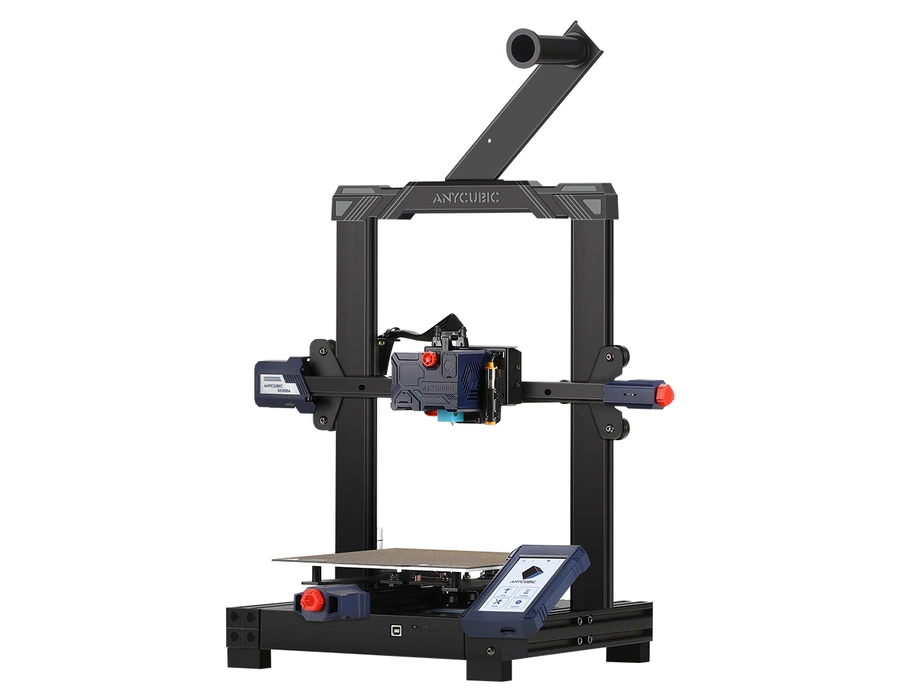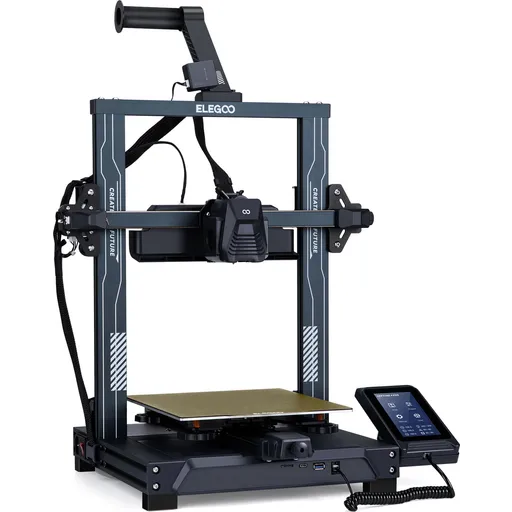Compare Kobra vs Neptune 4 PRO
Comparison between the best 3D printers
Choose the best 3D printer at the best price. The cheapest 3D printers are here.
Buy a 3D printer here with 3D Fila.
 |
 |
|
| Model | Kobra |
Neptune 4 PRO |
| Printing Material | Filament | Filament |
| Buy Filament for Anycubic Kobra | Buy Filament forElegoo Neptune 4 PRO | |
| Estimated price | $259,00 | $359,00 |
| Manufacturer | Anycubic | Elegoo |
| Release Year | 2022 | 2023 |
| Print Volume [mm] | 220x220x250 | 225x225x265 |
| Printer Size [mm] | 486x430x486 | 475x445x515 |
| Weight [kg] | 7 | 8,9 |
| Power Loss Recovery | YES | YES |
| Enclosed printer | NO | NO |
| Bed Leveling | Automatic | Automatic |
| Filament End Sensor | NO | YES |
| Bed type | Heated | Heated |
| Power supply system | Direct Drive | Direct Drive |
| Standard nozzle | 0,4 | 0,4 |
| Maximum Nozzle Temperature [°C] | 260 | 300 |
| Maximum Bed Temperature [°C] | 110 | 110 |
| Maximum printing speed [mm/s] | 180 | 500 |
| Filament holder | YES | YES |
| Camera for supervision | NO | NO |
| Recommended filaments | PLA, PETG, Tritan, Flex, ABS | PLA, PLA+, TPU, PETG, Nylon, ABS |
| Recommended slicers | Cura, Simplify, Slic3r, IdeaMaker | Bambu Studio, Super Slicer, Cura, Prusa Slicer, Orca |
| Maximum Resolution [mm] | 0,1 | 0,1 |
| Processor | ARM 64 bit | |
| Display | Display touchscreen 4,3'' | Touchscreen 4,3'' |
| Power Supply | 110/220V / 400W | 310 W |
| Connectivity | SD / USB | USB, microSD |
| Operating systems | Windows, Mac, Linux | Windows, Linux, Macbook |
| Date of registration in the system | 2022-11-09 | 2024-07-02 |
| Release date | 2022 | 2023 |
| Extra features | The Anycubic Kobra features automatic bed leveling and a direct extruder for easy filament handling. The print bed is coated with PEI on a flexible steel plate, improving adhesion and making prints easier to remove. The printer features sensorless homing and is designed to be easily disassembled for easy maintenance and customization. | The Elegoo Neptune 4 Pro stands out for its advanced features, including pre-installed Klipper firmware, a dual-gear direct extruder with a 5.2:1 ratio, a high-temperature nozzle (up to 300°C), a flexible magnetic PEI platform, efficient cooling fans, and a 121-point auto-leveling system. The printer also features a 4.3-inch touchscreen interface, dual linear bars on the X and Y axes, and a segmented heated bed for energy savings. |
| Support for multiple colors and materials (AMS and CFS) | NO | NO |
Notes * |
||
| Cost-benefit | 7 / 10 | 7 / 10 |
| Hardware | 2.1 / 10 | 3.2 / 10 |
| Tela | . | . |
| Print volume | 3 / 10 | 3 / 10 |
| Performance | 1 / 10 | 4 / 10 |
Conclusion |
| In comparing the Anycubic Kobra and the Elegoo Neptune 4 PRO, several key factors emerge that highlight their respective strengths and weaknesses. From a price perspective, the Kobra offers a more budget-friendly option, making it appealing for newcomers to 3D printing or those seeking a cost-efficient option. Its automatic bed leveling and PEI-coated flexible print bed demonstrate well-thought-out design, particularly for users who prioritize ease of use and maintenance. In contrast, the Neptune 4 PRO, while priced higher, provides a more advanced feature set. Its pre-installed Klipper firmware and dual-gear direct extruder allow for greater precision and versatility in a variety of materials, including more complex filaments like nylon. The additional features such as a 121-point auto-leveling system and efficient cooling fans further enhance its usability and print quality, catering to users looking for more advanced printing capabilities. In terms of performance, the Neptune 4 PRO significantly outshines the Kobra with its higher maximum print speed and temperature capabilities, making it suitable for more demanding printing projects. Furthermore, the increased maximum build volume provides flexibility for larger prints. Overall, the Anycubic Kobra excels as an entry-level 3D printer with its affordability and user-friendly features. In contrast, the Elegoo Neptune 4 PRO stands out for those willing to invest more for advanced capabilities, greater material diversity, and enhanced performance. For users prioritizing budget, the Kobra is a solid choice, while those focused on quality and versatility will find more value in the Neptune 4 PRO. Thus, the decision ultimately depends on the specific needs and experience level of the user. |

